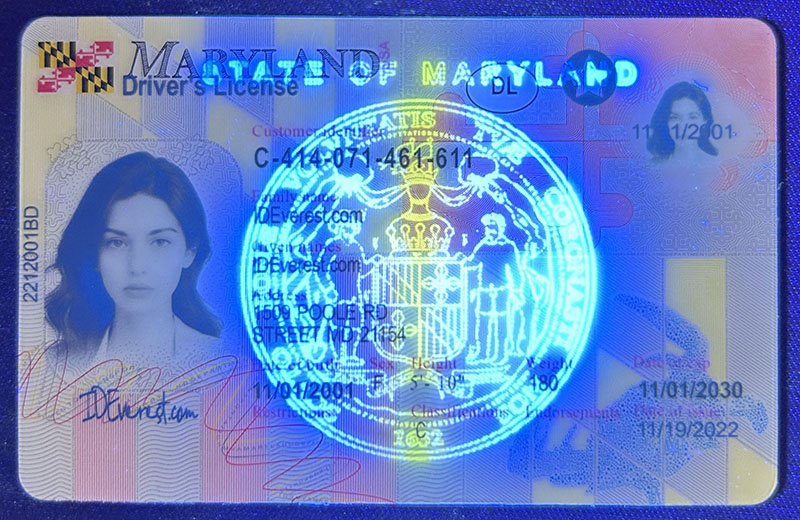How to Get a Learner's Permit in the United States
How to Get a Learner's Permit in the United States
Here's an in-depth look at getting a learner's permit in the United States, covering everything from eligibility and the application process to tips for success.
Introduction
A learner's permit is a critical first step toward obtaining a full U.S. driver's license. It allows new drivers (usually teenagers) to practice driving under certain restrictions, helping them gain the necessary skills and experience before taking the driving test for a full license. This guide will provide a comprehensive overview of the learner's permit process, including requirements, application procedures, and basic tips.
Eligibility Requirements
Eligibility for a learner's permit varies by state, but some common criteria include:
Age: Most states require applicants to be at least 15 or 16 years old. Some states may allow individuals under 15 to apply under special circumstances.
Residence: You must be a resident of the state in which you are applying. This usually involves providing proof of residency.
Parental consent: For minors, the consent of a parent or guardian is usually required.
Vision and health requirements: Many states require a vision test to ensure that you meet the minimum vision standards for driving.
Preparing to Apply
Before applying for a learner's permit, it helps to be prepared:
Study the Driver's Handbook: Each state has a driver's handbook that outlines traffic laws, signs, and safe driving practices. Studying this material is essential to passing the written test.
Take a Driver's Education Course: While not mandatory in all states, taking a driver's education course can be helpful. These courses typically cover basic driving skills, state laws, and safe driving techniques. Additionally, some states may offer insurance discounts to those who complete such courses.
Gather Necessary Documents: You will typically need the following documents:
1. Proof of identity (such as a birth certificate or passport)
2. Proof of residency (such as a utility bill or lease agreement)
3. Social Security number or similar identification
Application Process
The process for applying for a learner's permit typically includes the following steps:
Visit the DMV: Most applications must be submitted in person at your local Department of Motor Vehicles (DMV) office. Check your state's DMV website for specific locations and hours.
Fill out the application: Upon arrival, you will fill out an application. This form may be pre-filled online, which can save time.
Supply Required Documents: Submit the documents you gathered earlier. Make sure you have both a paper copy and a digital copy (if needed).
Pass the written test: The written test typically consists of multiple-choice questions based on the driver's manual. Topics may include road signs, traffic laws, and safe driving practices. Some tips for passing the written test include:
1. Take a practice test available online or through DMV resources.
2. Read the manual carefully and understand key concepts, rather than memorizing them.
Vision test: Most states require you to pass a vision test to ensure that your vision is sufficient to drive safely.
Pay the fee: Getting a learner's permit typically requires a fee, which varies by state. Be prepared to pay this fee when you apply.
Get the permit: If you pass the test and meet all requirements, you will be issued a learner's permit. This permit will come with specific restrictions.
Restrictions on a learner's permit
Learner's permits come with various restrictions designed to ensure safety:
Supervised driving: You must have a licensed adult in the car with you. This adult typically must be a parent, guardian, or other responsible adult over a certain age (usually 21).
Restricted time: Some states impose restrictions on the amount of time you can drive. For example, you may not be allowed to drive at night without adult supervision.
Passenger Restrictions: When driving with a learner's permit, the number of passengers you can have in your vehicle may be limited.
Cell Phone Prohibition: Most states prohibit the use of cell phones or any electronic devices while driving with a learner's permit.
Practice Driving
Once you have your learner's permit, the next step is to gain driving experience. Here are some tips for effective practice:
Record your driving time: Many states require at least a certain amount of practice before applying for a full license. Keep a record of your driving practice, noting the date, time, and conditions.
Varying Driving Conditions: Practice driving in a variety of conditions, including different times of day, weather conditions, and types of roads (freeways, residential, etc.).
Focus on Skills: Practice basic driving skills, such as parallel parking, merging, and obeying traffic signals. Make sure you also practice defensive driving techniques.
Feedback from Supervisor: Ask your supervisor for feedback on your driving. Constructive criticism can help you improve your driving and become more confident.
Prepare for the Driving Test
After you have held your learner's permit for the required amount of time and completed your practice time, you can prepare for your driving test. Here's how to prepare:
Review the Driver's Handbook again: Familiarize yourself with any rules or maneuvers that might be covered during your driving test.
Take a mock driving test: Many DMVs offer mock driving tests or simulators. Use these to get a feel for the actual testing environment.
Know the test route: If possible, practice on the roads where you will be taking your driving test. This can help reduce anxiety on test day.
Vehicle preparation: Make sure the vehicle you will be using for the test is in good working order and meets all safety requirements.
Stay calm and confident: On the day of your test, try to stay calm and focused. Remember that it's okay to make mistakes; just do your best and follow the examiner's instructions.
Conclusion
Getting a learner's permit is an important milestone in becoming a licensed driver. US driver's licenses include North Carolina fake ID, Colorado fake ID, Iowa fake ID, Louisiana fake ID, and Connecticut fake ID, among others. By understanding the eligibility requirements, the application process, and the importance of practice, you can approach this experience with confidence. Remember to study thoroughly, practice diligently, and always drive safely. As you progress toward earning your full license, the skills and habits you develop during this time will serve you well throughout your driving career. Good luck!









 Fake ID Sina changes society:
Fake ID Sina changes society:
 How to Get a Learner's Permit
How to Get a Learner's Permit
 Where can I buy a fake ID and
Where can I buy a fake ID and
 The Perfect Identity Adventure
The Perfect Identity Adventure